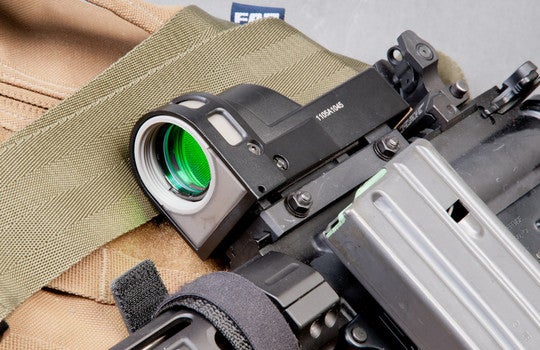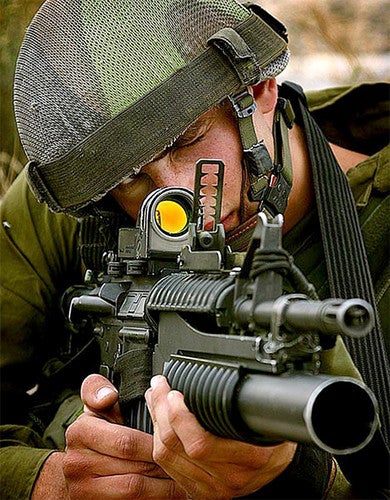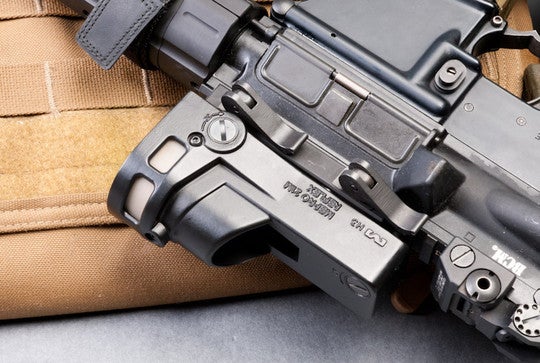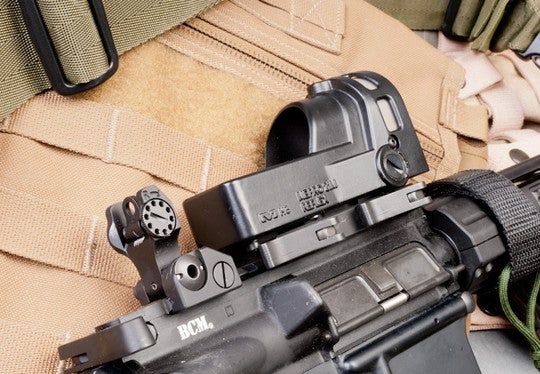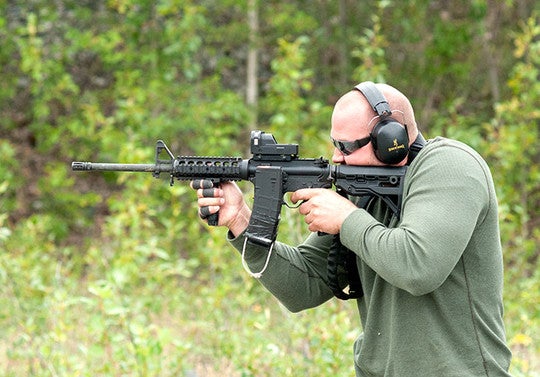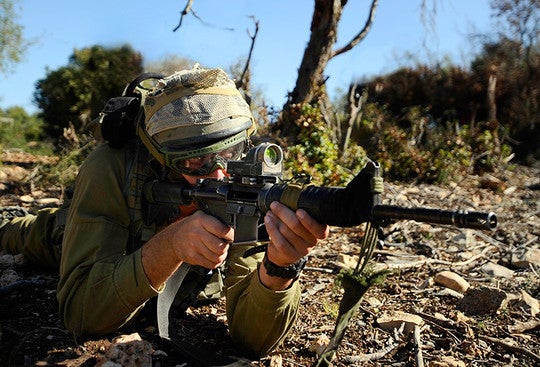Meprolight M21 dual-illuminated Reflex Sight
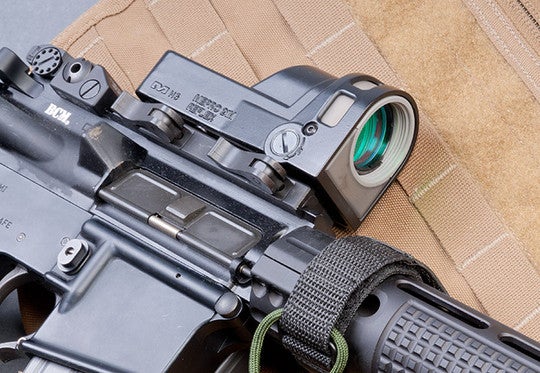
[ Written by gun optics guru Timothy Yan ]
video-1
With combat experiences from five major wars and concurrent anti-terrorism operations since its founding in 1948, the Israeli Defense Forces or IDF is one of the first military to understood the advantage of reflex sight on small arms for every infantryman. The main reflex sight used by the IDF for the last 20 plus years is the Meprolight M21. It features the always-on dual-illumination by fiber optic collectors during the day and it uses tritium illumination for low light and nighttime.
The Mako Group is the authorized distributor of Meprolight rifle sights in North America. I had a chance to try out a Meprolight M21 reflex sight during an Israeli style carbine course offered by Mako Defense, a sister company of the Mako Group.
The version that I tried has the “X” reticle. The M21 is also available with the 16 MOA triangle reticle, 4.3 MOA dot, 5.5 MOA dot and the bullseye (a dot inside of a circle). The tritium lamp has a 10-year guarantee by Mako. It typically lasts up to 14 years before the tritium became unusable. The tritium illumination unit is replaceable by factory service for a reasonable cost. The current production model is actually the Mepro M21m. The –m suffix is for modular design and because of that, every component on the M21m is replaceable and upgradeable. When mounted on an AR15 flat-top, the M21 has lower 1/3 co-witness with iron sights.
The version that I tried has the “X” reticle. The M21 is also available with the 16 MOA triangle reticle, 4.3 MOA dot, 5.5 MOA dot and the bullseye (a dot inside of a circle). The tritium lamp has a 10-year guarantee by Mako. It typically lasts up to 14 years before the tritium became unusable. The tritium illumination unit is replaceable by factory service for a reasonable cost. The current production model is actually the Mepro M21m. The –m suffix is for modular design and because of that, every component on the M21m is replaceable and upgradeable. When mounted on an AR15 flat-top, the M21 has lower 1/3 co-witness with iron sights.
video-2
The M21’s reticle has an amber color and its 30mm objective lens’ coating has a green color tint to it. Under the bright daylight, the green lens coating is hardly noticeable. As the light becomes dimmer, the green color appears greener. Since human eyes are more sensitive to the green color, by using a green lens tint it helps to increase the optical contrast and makes the reticle stands out. On a reflex sight design, using the green color coating is a common technique to compensate for a dim reticle. In the M21’s case is its tritium lamp. The majority of the M21’s fiber optic collectors are located in the front of the sight with some in small windows in a horseshoe like pattern around the sides and the top. All the fiber optics is behind protective translucent panels with a discreet light grey color.
I found the M21’s amber color reticle works fine in daylight in both the desert and foliage environments and it is adequate in the darkness. The reticle is also sharply focused and without blooming. However, like other fiber optic and tritium lit sight, it has some issues in certain light conditions. The illumination is barely visible in the low interior lighting of a house. Where neither the fiber optic collects enough light nor the tritium lamp is bright enough. According to the Israeli technique, if you can see the target through the objective lens tube, you will hit it at close range. Another oddity is that in a very bright sunny day, if the shooter is in the shadow of a building and looking through the M21, sometime a bright background would washout the reticle. Although the M21 is less prone to that than the Trijicon reflex sights because it has some of its fiber optics on the sides. Not that the M21 is bad, in fact it works beautifully in most light conditions. Just remember that the fiber optic light collector technology has its limitation.
The M21’s tritium illumination is night vision compatible and it has less blooming than other tritium sights through the NVG. The company gets the tritium from the same Swiss manufacturer that also supplies Trijicon. According to Mako, the main difference is that Meprolight only buys the raw tritium instead of having the Swiss to build the whole illumination unit like Trijicon. Meprolight applies their proprietary treatments to the raw tritium before packaging it and also use higher quality focus lens in their tritium tubes.
The Meprolight M21 was specifically developed according IDF’s requirement. The sight has to be tough enough to withstand the punishment by 18 years old conscripts. The IDF is expecting the M21 to last for at least 20 years of hard use. The sight uses no battery, has no external switch, it’s always on and ready to use. The M21’s aircraft grade aluminum housing is sealed against the environment and it’s waterproof. Both the windage and elevation adjustment dials are flush mounted. The M21 features an adjustable QD mount with dual QD levers for mil-spec 1913 rail. Interestingly, the IDF had actually tested the various QD levers on the market. They have found that while the cam types like LaRue and ARMS are better for retaining zero, the cross bolt type that is on the M21 has more tolerance for mishandling. Mako also offers the M21 with a co-witness M16 carrying handle mount. Noted that the user can’t switch out the mount, it’s factory calibrated to the sight’s lens and it’s permanently installed.
At $560 MSRP, the Meprolight M21 is not a cheap sight. However, the included adjustable QD mount base is worth at least $100. The retail package also comes with a handy elastic neoprene sight cover and a fabric storage pouch. The M21 is comparably priced to Trijicon’s dual illuminated 1x24mm reflex sight with QD mount and it’s cheaper and lighter than the Trijicon 1x42mm model. In term of durability, I rated the Meprolight M21 on the same level as the top-end Aimpoint M4 and the EOtech 553. Both of those cost $100-$200 more and weight double of the M21’s 8-ounces weight.


